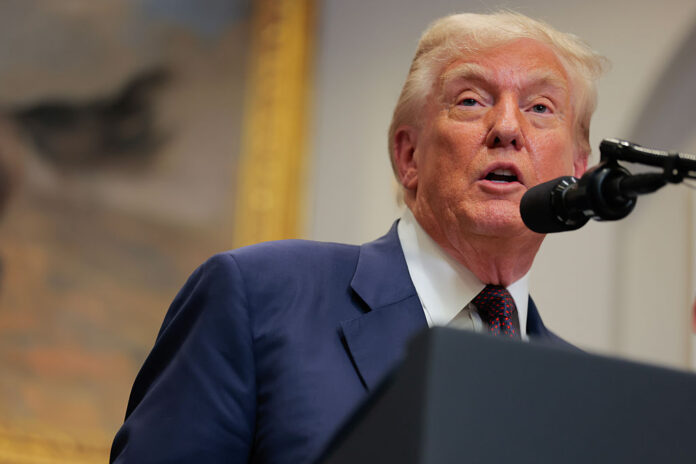The Changing Landscape of Politics and Technology: A New Era at the White House
In the hustle and bustle of Washington, D.C., a striking transformation is underway at one of the most iconic buildings in the world: the White House. While the government finds itself in a bit of a standstill due to a shutdown, the grounds of the White House are buzzing with activity. As construction workers begin demolishing the East Wing, plans are in motion to create a grand new ballroom. This isn’t just any ballroom; it’s a 90,000-square-foot space designed to host up to 1,000 guests. Exciting, right?
But here’s the twist: taxpayers won’t be footing the bill. That’s right! President Donald Trump is funding this ambitious $250 million project entirely through private donations. Let’s take a deeper dive into this fascinating development and what it signifies for the relationship between the tech industry and politics.
Who’s Footing the Bill?
A recent reveal from the White House has unveiled the names of the big players who are backing this project. The list includes some of the biggest tech giants in America—think Amazon, Apple, Google, Meta (formerly Facebook), and Microsoft. That’s a hefty line-up. Not just tech, but also defense companies like Palantir and Lockheed Martin, as well as telecom giants like Comcast and T-Mobile, are on the donor list. Even some big names from the crypto industry, including Coinbase and the Winklevoss twins, are in the mix. It’s clear that this project is attracting a diverse group of funders.
Now, while it’s fascinating to see who’s involved, the exact amounts that each company is contributing remain a bit murky. One interesting tidbit is that Google has reportedly given at least $20 million as part of a settlement related to the suspension of Trump’s YouTube account after the events of January 6, 2021. That raises questions: Is that amount all they are contributing, or is there more to the story? TechCrunch reached out to Google for clarity, but as of now, we’re still in the dark.
A New Chapter in Tech-Politics Relations
Oftentimes, political landscapes shift dramatically over time. The tech industry’s relationship with Trump has evolved quite a bit since he took office for the first time in 2016. Initially, many tech companies, wary of his policies, opted not to align with him. Fast forward to now, and it seems a cozy relationship is blossoming.
Meta, for instance, didn’t contribute anything to Trump’s first inauguration fund but opened the checkbook for his second with a cool $1 million donation. Amazon, which initially donated only $58,000, has upped its contribution to $1 million as well. These donations not only signify a change in attitude but also a newfound alignment between major tech firms and Trump.
So, what’s driving this shift? One possibility is that many tech companies are navigating their own pressure from antitrust lawsuits. The current Trump administration appears to be taking a softer stance on these issues when compared to the aggressive approach of the Biden administration. This could lead to easier, more cooperative relations between these companies and the administration.
Trump’s Focus on AI Development
Another interesting angle in this conversation involves artificial intelligence (AI). Trump has shown a stronger commitment to promoting AI development compared to his predecessor. With the unveiling of an AI action plan back in July, the administration aims to streamline processes and provide support for the construction of data centers. This initiative presents financial opportunities for companies that are at the forefront of AI technology.
Cutting through red tape and enabling innovation in tech can have huge implications. For instance, this could lift various startups and established tech giants alike. Prospects like these undoubtedly make collaboration with the Trump administration more appealing for the tech industry.
The Bigger Picture: Why It Matters
At first glance, the idea of a massive ballroom in the White House funded by tech giants feels both luxurious and outlandish. But dig a bit deeper, and you can see it’s much more than just a building project. It’s a reflection of shifting power dynamics in the world of politics and technology.
The intertwining of these two worlds can have various implications for how policies may be shaped in the coming years. With major tech companies financially backing the administration, we might see more favorable regulations for the industry. This could lead to accelerated innovation but might also spark concerns over the influence of the tech industry on government decision-making.
For citizens, this raises important questions: How can we ensure that this relationship remains a force for good? How can we hold companies accountable to protect the public interest, especially when they wield so much power?
Conclusion: Personal Reflections on the Changing Dynamic
As I reflect on this evolving relationship between the tech industry and the White House, I can’t help but feel that we’re entering a new chapter in both politics and technology. The potential for positive change exists, but it also comes with cautionary tales. It reminds me of how interconnected our world has become—how advancements in one field can swiftly influence the other.
While a lavish ballroom may seem trivial in the grand scheme of our nation’s struggles, it symbolizes the merging of elite interests. It challenges us to consider how this could influence the discussions about regulation, ethics, and the future of innovation. As citizens, it’s crucial we keep these conversations alive—questioning and discussing how these partnerships should ideally benefit everyone.
In the end, it’s up to each of us to remain engaged and informed. The outcomes of these developments could very well shape our future in ways we can’t yet fully comprehend. So, what do you think? Is this a step in the right direction, or are we walking down a precarious path? The discussion is just beginning, and your voice matters more than ever.

